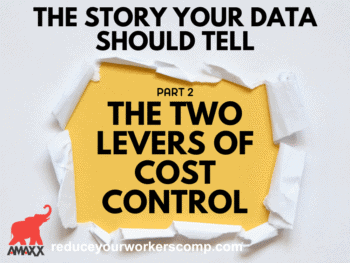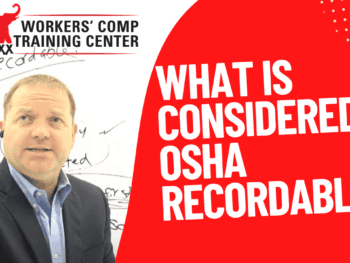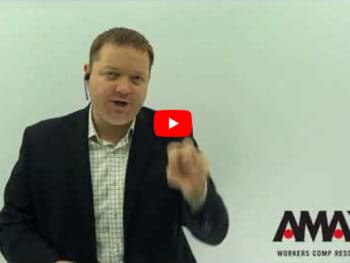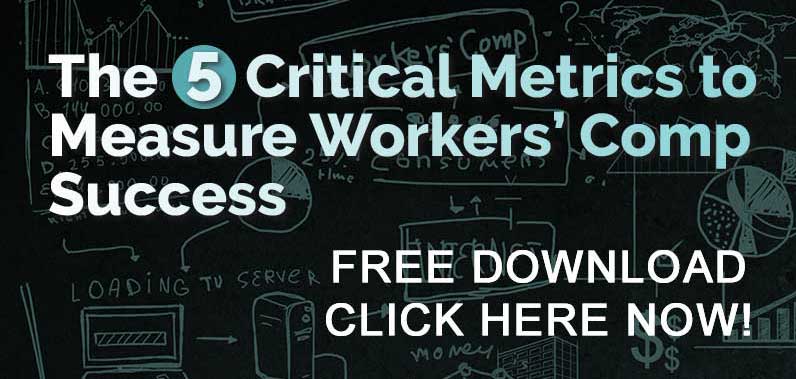Hello, Michael Stack here, Principal of Amaxx, founder of COMPClub and co-author of Your Ultimate Guide to Mastering Workers’ Comp Costs. I recently put together a series on the National Workers’ Compensation Conversation. There was a meeting that was held in Dallas on May 10th and 11th of 2016 where 39 stakeholders came together. That series details all the information and discussion that was had at that meeting. It also reviews the political history and, the imperative issues that were identified throughout the course of the National Conversation. As a follow-up to that series, I put together a town hall webinar, where I asked for the input and perspective from those within the workers’ compensation industry. Everyone was invited to participate that wanted to. What I want to do today is go over the main theme that was discussed in the town hall webinar, as well as how that can impact both the national conversation and your organization.
Incentivizing The Right Work Comp Outcomes
The main theme that was discussed from the multiple participants and the multiple people that added on that town hall webinar was this idea of incentives, and incentivizing the right work comp outcomes, and how right now, as we’re set up, that’s not the way the system currently works, so I want to just detail this out and just very quickly, if you want to know all the details of the imperative issues, and go through that in detail, I highly recommend checking out that Workers’ Comp National Conversation series that I put together. You’ll find it extremely informative.
The Longer A Claim Goes On, The More Revenue Is Generated
For this purpose, today, we’re just going to look at something very simple. Let’s look at the costs of a claim over time, and really how this works. The longer a claim goes on, and obviously this isn’t to scale, but the longer a claim goes on, the more expensive that claim becomes, and here was the idea that was talked about, really, on that town hall webinar from the various perspectives.
This is the profit line of all the different stakeholders in the industry. That includes claims management, that includes vendors, that includes medical providers, that includes various vendors that are servicing that claim. The profit and the revenue from those various providers increases the longer a claim goes on, and the more expensive that claim becomes, so that was one issue that was discussed throughout the course of that webinar.
Collateral Source Benefits
Second issue, then, is from the employee side, and let’s take a look at this, and we deem this, we call this collateral source benefits, and let’s say, from an employee standpoint, this is what that employee brings in net, of one example I’m just going to use childcare as an example of a collateral source benefits. Net of childcare expenses, this is what that employee brings in on a weekly or monthly basis.
Now let’s take a look at that individual on workers’ comp insurance. They’re getting 66 and 2/3 percent of their income, and they have no childcare expense. Now they might be bringing in this much money monthly.
They might actually be making more money out of work than they are actually working, and one of the parents now gets to stay home with the child or children. Collateral source benefits can incentivize the wrong thing. The way that our industry is currently set up can incentivize a wrong outcome. I’m not going to have an answer for what this looks like on a national conversation level today, but what I do what to do is start to present and float the idea as something that needs to be a part of this conversation moving forward, needs your perspective and your input for how we can now start to solve this issue of incentivizing the wrong outcomes the way that the current system operates.
Accountable Care Organizations
What I want to do now is start to look at how this can impact your organization and some other examples of things that have been done to now start to try to incentivize these right outcomes, and the first thing that I want to give an example of is these ACOs, or accountable care organizations.
These were designed to now incentivize the right outcome, because providers, medical providers, are compensated for the quality of their care and the outcome with the patient, rather than the amount of treatments that they give, so the provider is compensated for the quality of their care, as well as the outcome of the patient, rather than the amount of treatments, or amount of surgeries, that they are now performing. That starts to now really fall under this umbrella of incentivizing the right outcomes. One example for us to start to think about and look to in our industry, obviously easier said than done.
Cost Allocation / Charge Back System
What is a reasonable thing to expect is now to bring this idea to your organization? Bring this idea of incentivizing the right outcomes to your organization, so here’s what I want to give an example of, of how to do this. Call the cost allocation or our chargeback system, and I want to give a very quick example of this. Let’s say you have 3 divisions in your company. Each of them has $100,000 in losses.
We know that the activities that produce the best outcomes are getting a claim reported immediately, and getting that employee back to work. It creates lower workers’ compensation cost, and it creates a better outcome for the employee, for the injured worker, so you design a cost allocation, you design a chargeback system, based on those 2 metrics, and here’s what this looks like. In this first edition, they’re not doing a great job of getting their claims reported timely. They’re not hitting the metrics that you’ve designed, so they’re charged that full $100,000 in work comp losses. Division number 2, they’re doing a little bit better in their injury reporting, but they’re not doing a great job in getting their employees back to work, so they’re charged $80,000, so they get that savings of $100,000, and that division leader, the person that’s in charge of this particular division, now seeds $20,000 more on that organization’s bottom line for that particular period. This final division, then, they’re doing a great job with getting claims reported timely.
They’re getting a great job getting their employees back to work, they have a transitional duty job bank, they’re working with their medical providers, they’re working with the system as you’ve created it and laid it out in your organization. Now they get an additional $40,000 in profit on that division leader’s bottom line.
Starting to now incentivize the right outcomes of two simple things:
- Getting the claims reported timely
- Getting their employees back to work.
Starting to incentivize the right work comp outcomes. It’s an idea that needs to be a part of the national conversation.
Easier said than done, but starting to work towards this idea of incentivizing the right workers’ comp outcomes from a regulatory or systems standpoint, and then taking that same idea and implementing it in your organization in the form of a cost allocation or a chargeback system over multiple divisions, and if you don’t have multiple divisions, starting to put this in play with individual supervisors’ bonuses, individual, different pieces of a same company, to now incentivize the right outcomes to have them do the right activities that create the lowest cost for your organization and best outcomes for the injured workers.
Because remember, your success in workers’ compensation is defined by your integrity. So be great!














